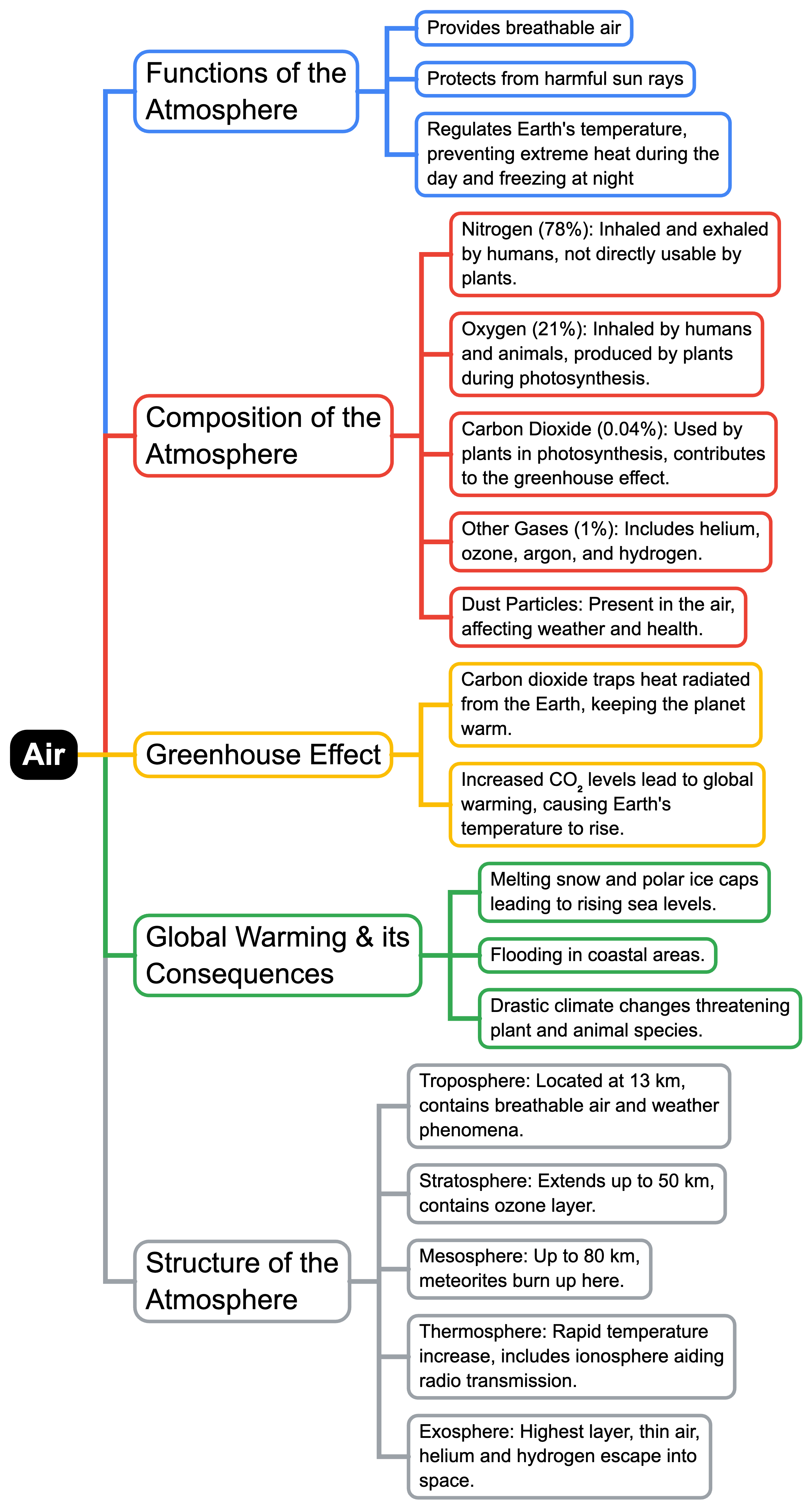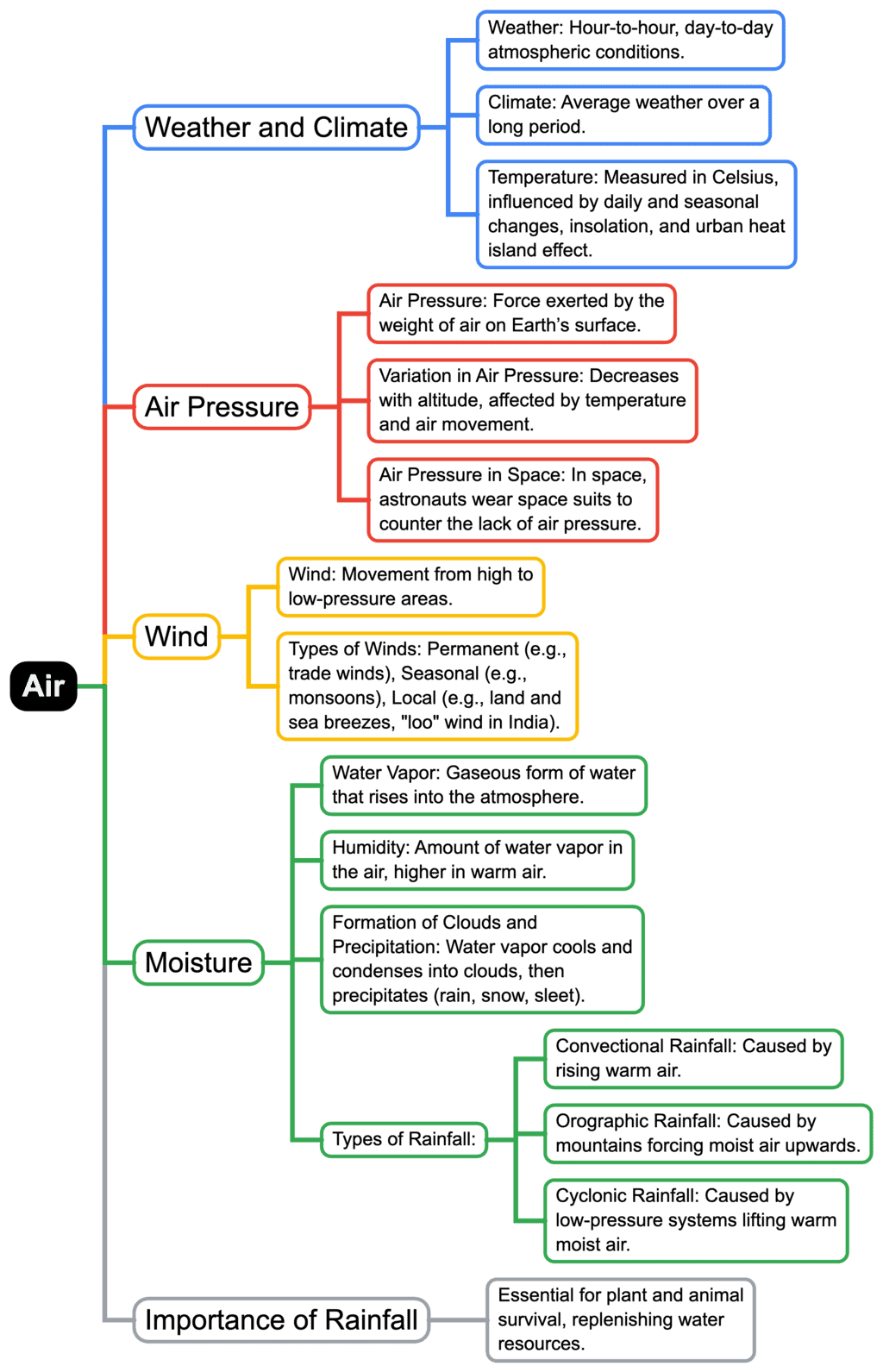Class 7 Exam > Class 7 Notes > Social Studies (SST) Class 7 (Old NCERT) > Mind Map- Air
Mind Map- Air | Social Studies (SST) Class 7 (Old NCERT) PDF Download


The document Mind Map- Air | Social Studies (SST) Class 7 (Old NCERT) is a part of the Class 7 Course Social Studies (SST) Class 7 (Old NCERT).
All you need of Class 7 at this link: Class 7
|
63 videos|371 docs|46 tests
|
FAQs on Mind Map- Air - Social Studies (SST) Class 7 (Old NCERT)
| 1. What is air and why is it important for life? |  |
Ans. Air is a mixture of gases that surrounds the Earth and is essential for life. It primarily consists of nitrogen (78%), oxygen (21%), and small amounts of other gases like carbon dioxide and argon. Air is crucial because it provides oxygen for living organisms to breathe, supports combustion, and plays a vital role in weather and climate systems.
| 2. How do plants use air in the process of photosynthesis? |  |
Ans. Plants use air, specifically carbon dioxide, during photosynthesis. They take in carbon dioxide from the atmosphere through tiny openings in their leaves called stomata. In the presence of sunlight, plants convert carbon dioxide and water into glucose (a type of sugar) and oxygen, which is released back into the air. This process is essential for plant growth and also produces oxygen necessary for other organisms.
| 3. What are the major components of air? |  |
Ans. The major components of air include nitrogen (approximately 78%), oxygen (about 21%), argon (approximately 0.93%), carbon dioxide (around 0.04%), and trace amounts of other gases such as neon, helium, and methane. Each of these gases plays a significant role in various natural processes, including respiration, combustion, and the greenhouse effect.
| 4. How does air pollution affect the environment and health? |  |
Ans. Air pollution occurs when harmful substances are released into the atmosphere, leading to negative impacts on both the environment and human health. It can cause respiratory problems, cardiovascular diseases, and exacerbate existing health conditions. Environmentally, air pollution can harm wildlife, damage forests, and contribute to climate change by increasing greenhouse gas concentrations.
| 5. What are some ways to reduce air pollution? |  |
Ans. To reduce air pollution, individuals and communities can take several actions, including using public transportation or carpooling to decrease vehicle emissions, using energy-efficient appliances, reducing waste, and promoting the use of renewable energy sources like solar and wind power. Additionally, planting trees and maintaining green spaces can help improve air quality by absorbing carbon dioxide and releasing oxygen.
Related Searches





















